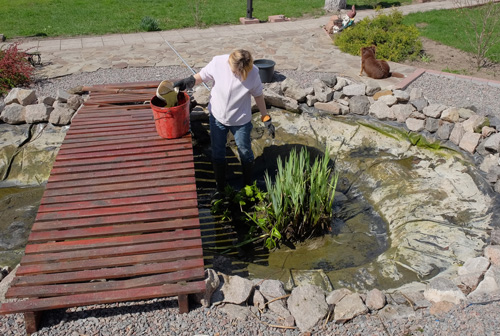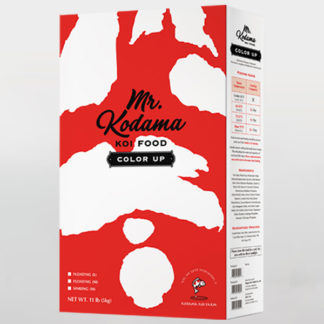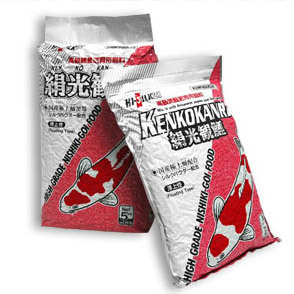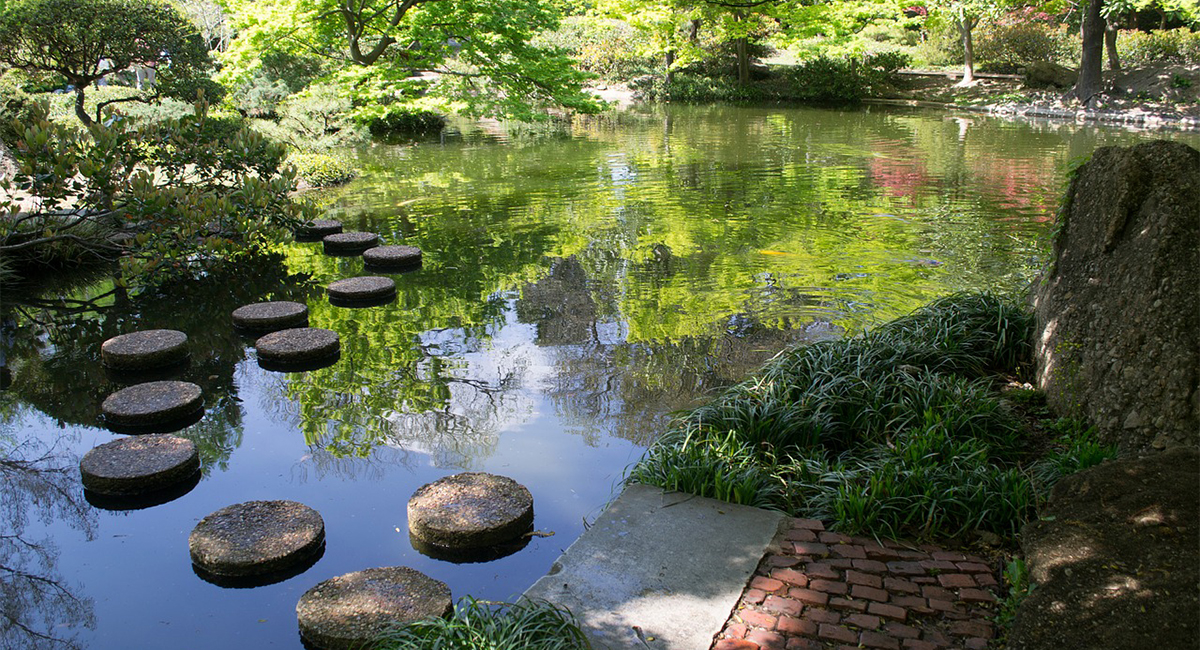
If you’re looking for a way to transform your yard into a tranquil space, koi pond construction is a great option. A koi pond is a landscaping feature that will do just that. There are several different styles of koi ponds ranging in design and koi pond maintenance needs, to extra features, such as waterfalls for aeration. Additionally, considering koi pond filtration systems is crucial for maintaining water quality and koi health.
This article will teach you about the varying kinds of koi ponds and help you decide which type will best complement your space. We will also show you some of the most popular designs for both traditional koi ponds and those with waterfall features, along with useful tips to consider regarding both the koi pond landscaping ideas and koi pond water features when designing your own pond.
Getting Started with Designing a Koi Pond
If you’re thinking about adding a koi pond to your property, here are some tips and expert advice to help you get started in the process to design the pond.
First, you must establish where to build the pond. You’ll need enough room for the pond itself, taking into consideration providing enough space for the koi fish to swim around comfortably, while also planning for koi pond plant selection to enhance the natural beauty and provide shade.
Pond shape is best determined by the space it will be in. While popular options include square, rectangular, or oval shapes, you can also have an organic shape that follows the flow of your space naturally. The depth of the water is also important: Ponds should be at least two feet deep so the fish can find shelter from predators and the sun, with koi pond safety measures in place to protect them further.
To keep your koi healthy, your pond should include a waterfall or fountain to keep the water moving, thus providing oxygen. Implementing koi pond aeration techniques such as diffusers can further enhance oxygen levels. It’s also a good idea to install a koi pond lighting system in and around your pond for safety and ambiance, so you can enjoy your pond at night as well. Additionally, regular koi pond seasonal care will ensure the pond and fish thrive throughout the year.
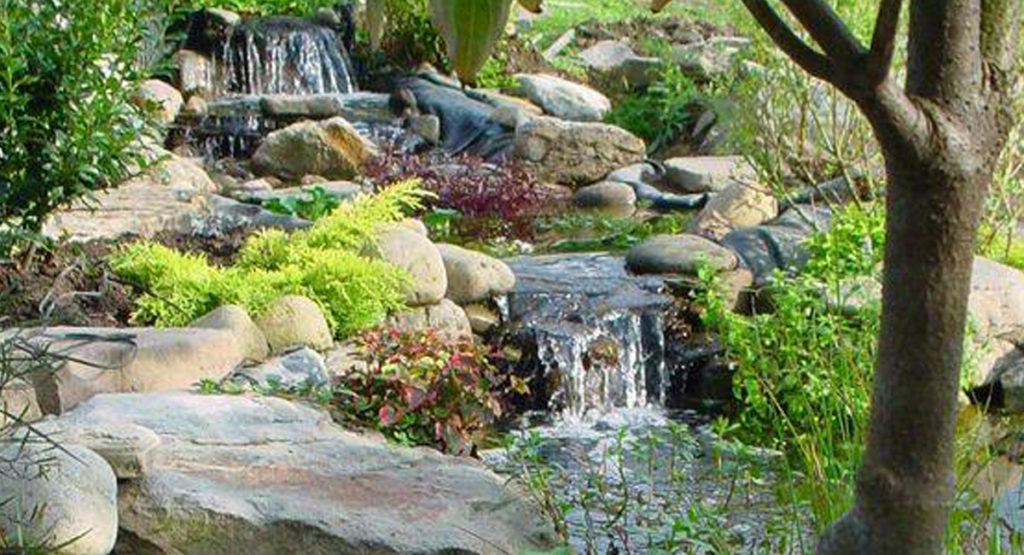
What are the different construction types of koi ponds?
There are several types of koi pond construction methods, including liner, concrete block, and gunite. Additionally, a comparison of pond liner materials is essential when choosing the right option.
- Liner koi pond: is the most economical to install and the best option for a natural look and feel. You can use a rubber pond liner, which is thicker than a vinyl one and provides better protection against dirt and debris to keep koi healthy in their environment.
- Gunite koi pond: More expensive to install but is much more durable and requires less maintenance, gunite is best for contemporary designs with clean shapes as it is crafted with straight lines and corners.
- Concrete koi pond: Longer-lasting than the other styles, concrete ponds are still cost-effective and can be customized easily for more unusually-shaped ponds.
Creating a Healthy Koi Habitat
Japanese Koi Fish can live in almost any climate if you provide them with the right environment. Depending on the size of your pond, you can include many koi fish or just two big ones. The important thing is to make sure there is enough space for them to swim around comfortably and have their own space.
A Japanese water garden within a koi pond has thick plants in the water, creating a natural habitat for the fish while making it look more like a natural pond or stream. Adding plants and flowers to your pond makes it more attractive, and can also provide a hiding place for the fish. When adding plants, be sure to introduce them one at a time so that the Koi fish have time to get used to the changes in their environment. You might also consider adding some fish food, as the new plants may not provide enough nutrients for the fish.
However, you should not overcrowd your pond, as this can lead to decreased oxygen levels and unpleasant smells.
You also want to make sure there is plenty of sunlight reaching the water’s surface; otherwise, algae growth may become a problem. Koi ponds can be divided into two different zones: one that is completely covered with plants and an area without plants. This allows for a variety of aquatic life to live in the pond while still providing a place for the fish to hide.
Make sure you choose high quality koi food for your pond to have the best results. These are the top foods we recommend for color and growth.
Koi Pond Ideas & Design Concepts
Here are our top koi pond design ideas to inspire you when building your own pond.
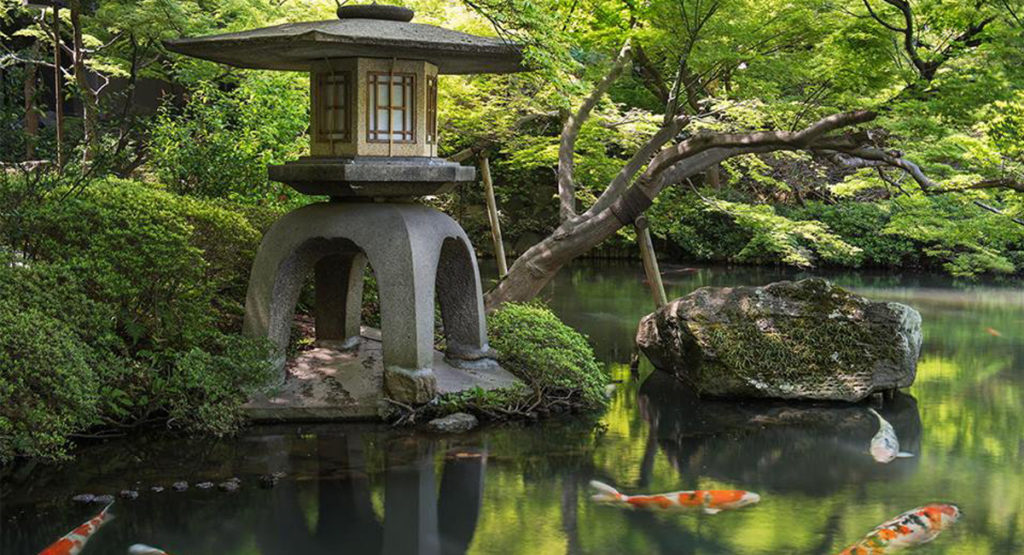
Glass Walkway Over Koi Pond
Installing a glass walkway over your koi pond can be an amazing way to experience your fish up close. However, it’s important to be aware of the weight limit before installing one. Additionally, keep in mind that the cost of constructing the pond is expensive and you will have to clean the glass every now and then.
Minimalist Koi Pond
A minimalist koi pond is a clean and simple design that does not have any plants or rocks. It typically features one or two koi fish and is a great option for those who want a sleek and modern look. The pond can be decorated with some simple items, such as lights or a fountain to make it more interesting. Some people choose to go with a minimalist design because it is elegant and understated.
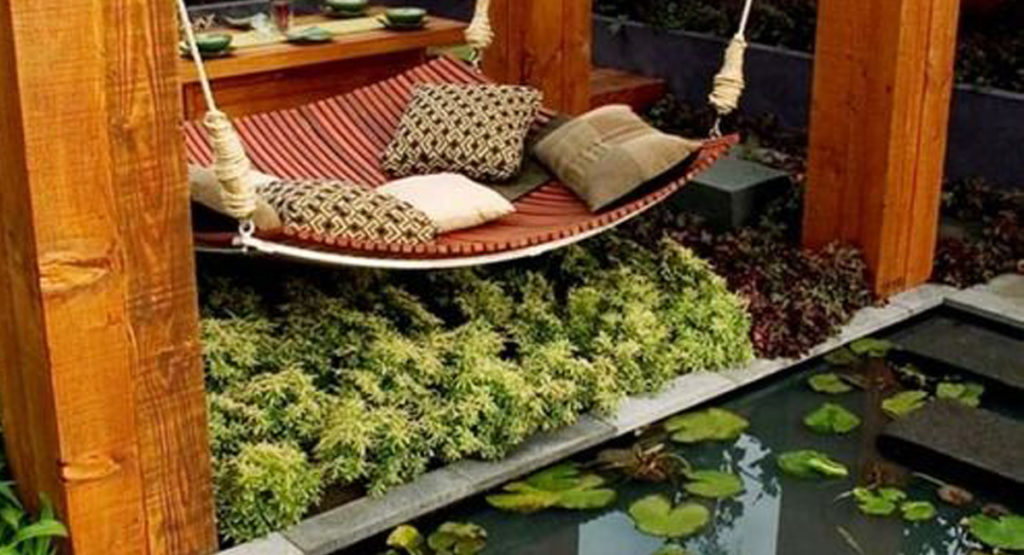
Koi Pond with a Sitting Area
Koi ponds are a great way to add character and zen to your backyard. Not only do they provide a beautiful focal point, but they also offer a place for you to relax and escape from the rest of the world. If you have the space, building your koi pond under the deck is a wise decision because it will give you more room for your koi and its surrounding water, which will help support their health and well-being. The deck also shelters the fish during extreme weather conditions.
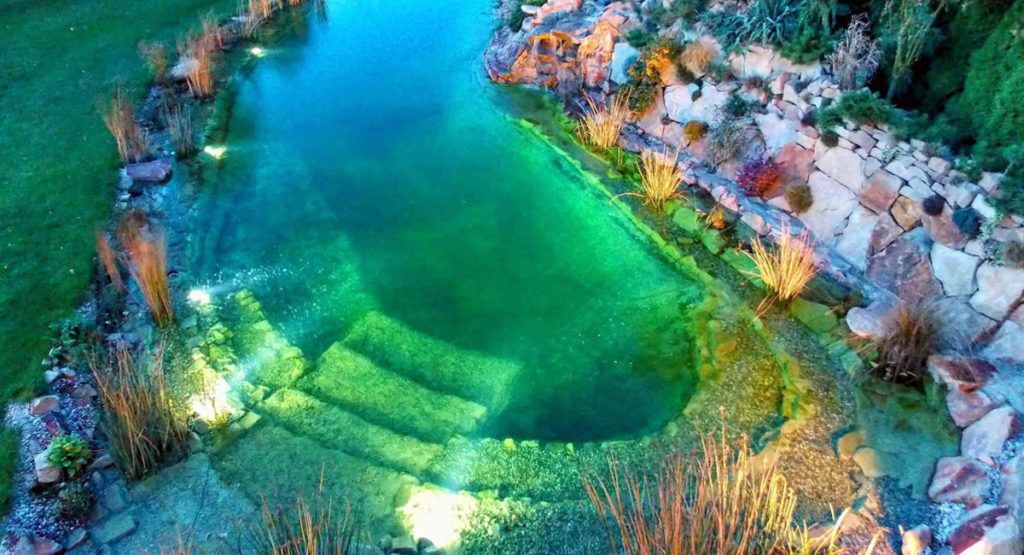
Yard Takeover Koi Pond
A koi pond is a great way to create an oasis in your outdoor space. Not only are they beautiful, but they are also eco-friendly. Koi ponds don’t require any grass, so you can get rid of your lawnmower and other tools. In addition, you can maximize the space in your yard by taking a corner and creating a deck around it.
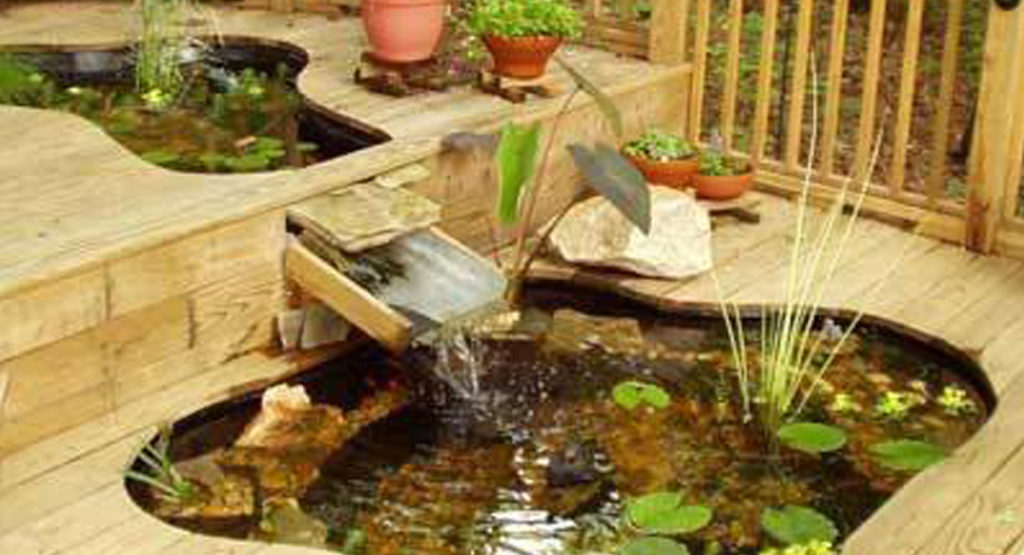
Small Backyard Oasis
If you have a small backyard, there are plenty of options for you. You can use landscaping rocks, mulch, and flowers or plants to create a small pond tailored to the size of your space. No matter how big or small they are, koi ponds are an impressive feature in any backyard and can truly enhance the space.
Water Garden Koi Pond
Adding a multitude of plants to your koi pond is a beautiful way to bring more life into your backyard. Depending on if your pond gets more sun or more shade, you’ll have to use different plants that thrive in the amount of sunlight provided. Water lilies, lotus plants, and cattails are just three ideas of water-loving plants that will thrive in your pond. Some plants may even double as food and shelter for your koi.
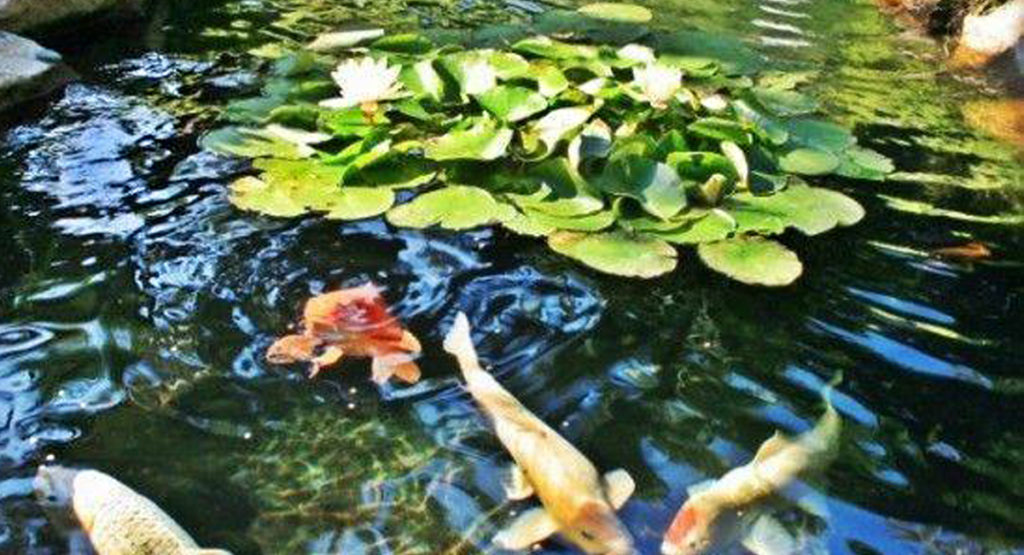
Water Lily Koi Pond
Water lilies are one of the most popular plants used in water gardens. They come in a variety of colors, including white, pink, red, and yellow. Water lilies can be planted in pots or tubs and placed in the pond. Keep in mind they need full sun to grow well. Water lilies are safe to be grown in ponds that have fish, and koi will eat the leaves if they are given the opportunity. You can even buy them on our website!
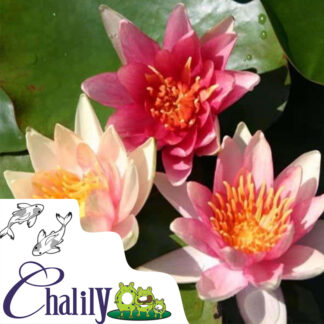
Pre-Grown Water Lilies
$39.99
Important things to remember:
- Most water lilies prefer a depth of 18-24 inches
- These lilies include a small pot which can be used to plant your lily. The root ball can instead be planted into a larger pot or placed directly into the bottom of your pond
- Plants convert carbon dioxide into oxygen and absorb nutrients from water that are derived from fish waste
- Your plants are 100% guaranteed to arrive alive and healthy
- Water lilies need more than 4 hours a day of sunshine to flower
- Keep lilies away from any splashing water and away from your pump or filter
- It is highly recommend to fertilize your water lily twice per month with aquatic fertilizer tablets
- If you have koi in your pond, it is recommend to cover the root mass with rocks or pea gravel. If uncovered, there is the possibility of your fish eating your lily
- Includes string and a fake lily pad/flower which can be used to find where the lily is located in your pond (optional)
No pond, no problem! Water lilies thrive in any container!
Lotus Plant Koi Pond
Lotus plants can be a beautiful addition to any koi pond. They are not recommended for areas with intense sunlight, as they need partial shade to thrive. Lotus plants can grow up to two feet tall, so make sure you have enough space in your pond before adding them. They should be planted in a pot and placed in the water so the top of the pot is just below the surface. Be sure to add fertilizer tablets every few weeks to help them grow.
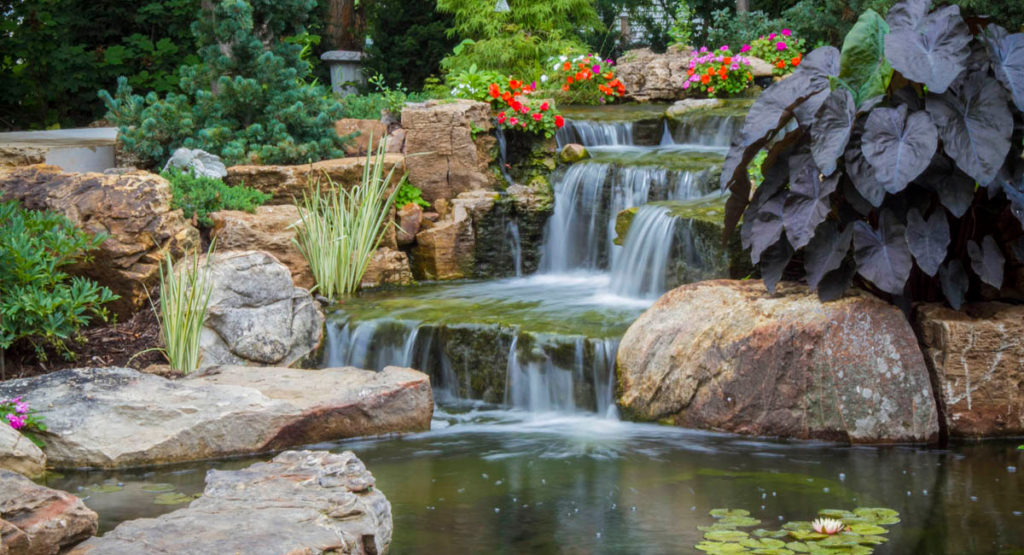
Waterfall Koi Pond
Waterfalls are one of nature’s most beautiful gifts. They not only add sound and beauty to an outdoor space, but they also provide aeration for fish ponds. Adding a waterfall will give your koi pond an even more tranquil feel. You can choose to have the waterfall run continuously or just turn it on for special occasions. The trickling sound of the water feature adds to the natural tranquility of the outdoor space. Koi fish will appreciate the aeration that comes from adding a waterfall to their habitat.
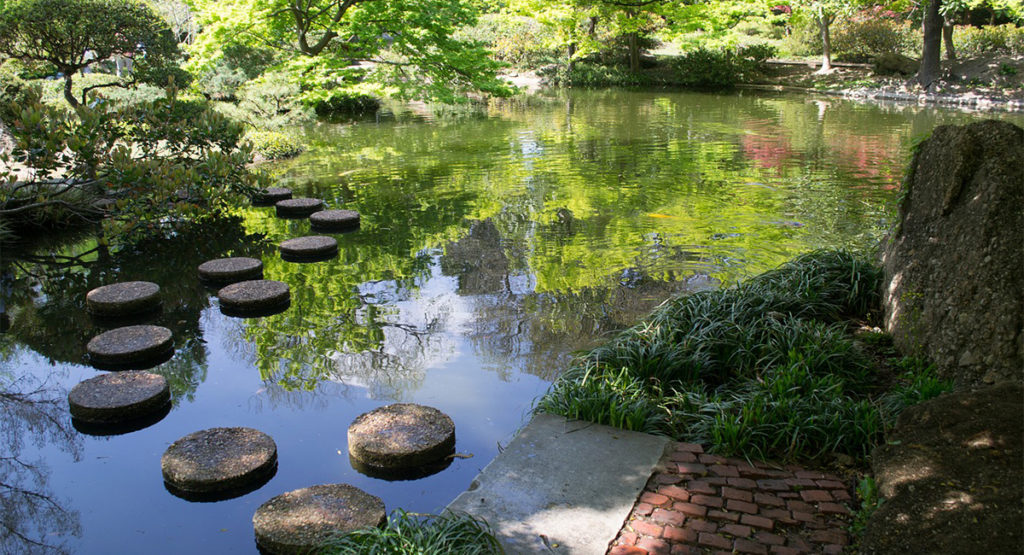
Natural-Looking Koi Pond
Rocks, algae, or clay soil are all natural-looking materials for covering the bottom of a cement koi pond. Utilize these materials if you’re going for an “eco” look in your pond. Some aquatic plants and soil types coexist with one another well. For example, adding rocks to a koi pond will provide habitats for fish, turtles, and other animals. Rock placement can be used as decoration but also aids in habitat development.
Ready to Build Your Own Koi Pond?
We hope you enjoyed our article on koi pond design ideas. Be sure to check out our website for more information on how to maintain your pond and keep your koi healthy and happy.
And here’s our 5 Spring Koi Pond Prep Tips for Successful Year Using Proper Opening Maintenance
Be sure to check out the article Koi Pond in Winter: Best Tips for Winter Koi Pond Preparation for guidance that will keep your pond thriving year-round, in every season.
And don’t forget to share your own ideas with us in the comments and on social media—we would love to see them!

